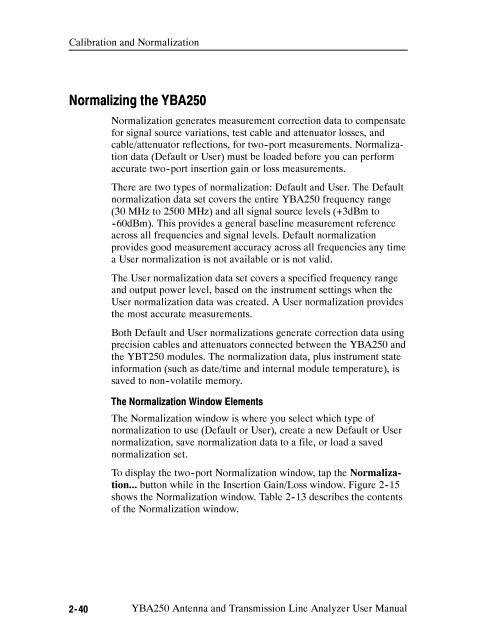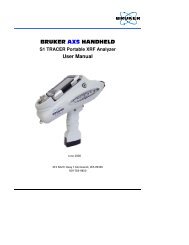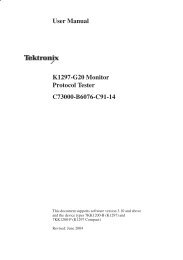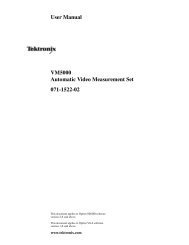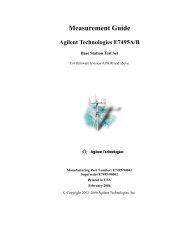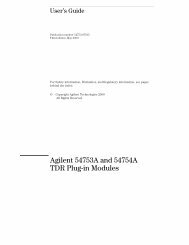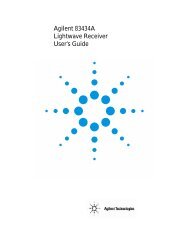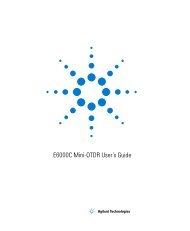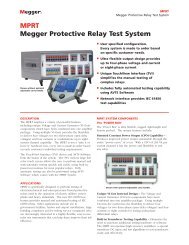YBA250 Antenna and Transmission Line Analyzer User Manual
YBA250 Antenna and Transmission Line Analyzer User Manual
YBA250 Antenna and Transmission Line Analyzer User Manual
You also want an ePaper? Increase the reach of your titles
YUMPU automatically turns print PDFs into web optimized ePapers that Google loves.
Calibration <strong>and</strong> Normalization<br />
Normalizing the <strong>YBA250</strong><br />
Normalization generates measurement correction data to compensate<br />
for signal source variations, test cable <strong>and</strong> attenuator losses, <strong>and</strong><br />
cable/attenuator reflections, for two-port measurements. Normalization<br />
data (Default or <strong>User</strong>) must be loaded before you can perform<br />
accurate two-port insertion gain or loss measurements.<br />
There are two types of normalization: Default <strong>and</strong> <strong>User</strong>. The Default<br />
normalization data set covers the entire <strong>YBA250</strong> frequency range<br />
(30 MHz to 2500 MHz) <strong>and</strong> all signal source levels (+3dBm to<br />
-60dBm). This provides a general baseline measurement reference<br />
across all frequencies <strong>and</strong> signal levels. Default normalization<br />
provides good measurement accuracy across all frequencies any time<br />
a <strong>User</strong> normalization is not available or is not valid.<br />
The <strong>User</strong> normalization data set covers a specified frequency range<br />
<strong>and</strong> output power level, based on the instrument settings when the<br />
<strong>User</strong> normalization data was created. A <strong>User</strong> normalization provides<br />
the most accurate measurements.<br />
Both Default <strong>and</strong> <strong>User</strong> normalizations generate correction data using<br />
precision cables <strong>and</strong> attenuators connected between the <strong>YBA250</strong> <strong>and</strong><br />
the YBT250 modules. The normalization data, plus instrument state<br />
information (such as date/time <strong>and</strong> internal module temperature), is<br />
saved to non-volatile memory.<br />
The Normalization Window Elements<br />
The Normalization window is where you select which type of<br />
normalization to use (Default or <strong>User</strong>), create a new Default or <strong>User</strong><br />
normalization, save normalization data to a file, or load a saved<br />
normalization set.<br />
To display the two-port Normalization window, tap the Normalization...<br />
button while in the Insertion Gain/Loss window. Figure 2-15<br />
shows the Normalization window. Table 2-13 describes the contents<br />
of the Normalization window.<br />
2-40 <strong>YBA250</strong> <strong>Antenna</strong> <strong>and</strong> <strong>Transmission</strong> <strong>Line</strong> <strong>Analyzer</strong> <strong>User</strong> <strong>Manual</strong>


